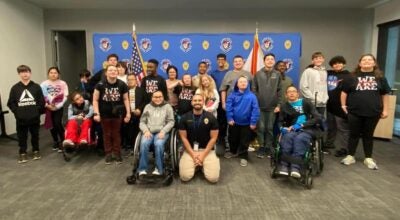Hot glass, cool art
Published 5:06 pm Tuesday, October 21, 2008
“Hot!”
Andrea Graves shouts the three-letter word every time she removes a hollow metal pipe from an unbearably hot furnace set at 2,100 degrees. An orange blob of molten glass rests at the pipe’s tip, a signal to get out of the way or else.
Graves and seven other University of Montevallo students are the first to experience “Intro to Glassblowing,” the latest course offering from the university’s art department.
Taught by Dr. Clifton Pearson, the course has been decades in the making. The art department was looking to buy glassblowing tools and equipment when River Gallery in Chattanooga, Tenn., donated $100,000 worth of equipment to the university.
“(The donation) is what got us going because otherwise we’d still be waiting to get the class going,” Pearson said. “It was the shot in the arm we really needed.”
Twice a week for three hours, the students work in pairs blowing glass into bottles, bowls, paperweights and vases. Graves and classmates Kelsey Roberts, Andrew Emerson and Ken Waggoner spent last Thursday afternoon perfecting their bowl shapes.
Before class, the students splash cool water on their necks and faces and cover their arms with protective sleeves to shield themselves from the intense heat.
“They have to get accustomed to the heat because everything that they do except putting the piece away involves extreme heat,” Pearson said. “When we first started in August it was awfully hot and the students were having to take little breaks and rehydrate.”
Unlike other art specialities, glassblowing is a time-sensitive and unpredictable skill. This semester, Pearson sought seasoned art majors who could think on their toes about color, form, shape and texture.
“It’s a fast response situation because you have to work with the glass while it’s hot,” Pearson said. “The students need to be very rapid in their thinking about design. It’s not like being able to sit comfortably and paint or draw. You have to get moving.”
The capricious nature of glassblowing is what lured students to the course.
“A lot of artists are about perfection, but you have to work with the glass,” Roberts said. “It’s a process and it may not turn out like you thought, which can be cool or frustrating at times.”
While art majors are given first priority to enroll in the course, Pearson said it may open to all majors.
“We’re hoping that this will develop into other courses in glass, but that’s not something we can structurally plan for right now because a lot of our equipment is used,” Pearson said. “We’re hoping we can at least get a few years out of it.”
“Based on whether or not we can get some energy and enthusiasm and some support, we’ll decide whether or not to add a second class,” Pearson said.









